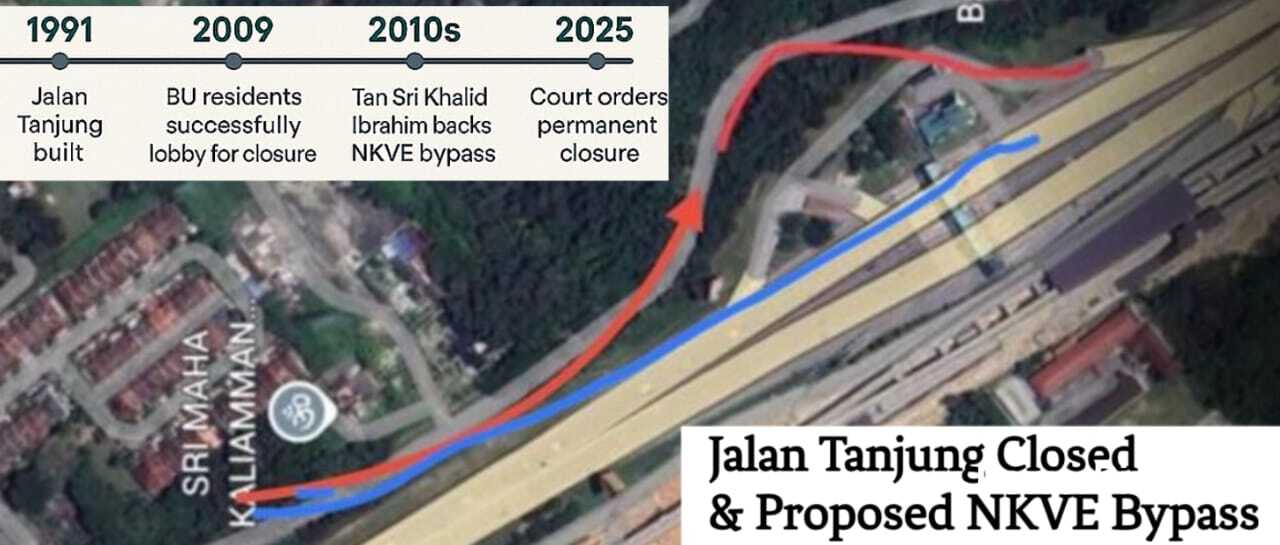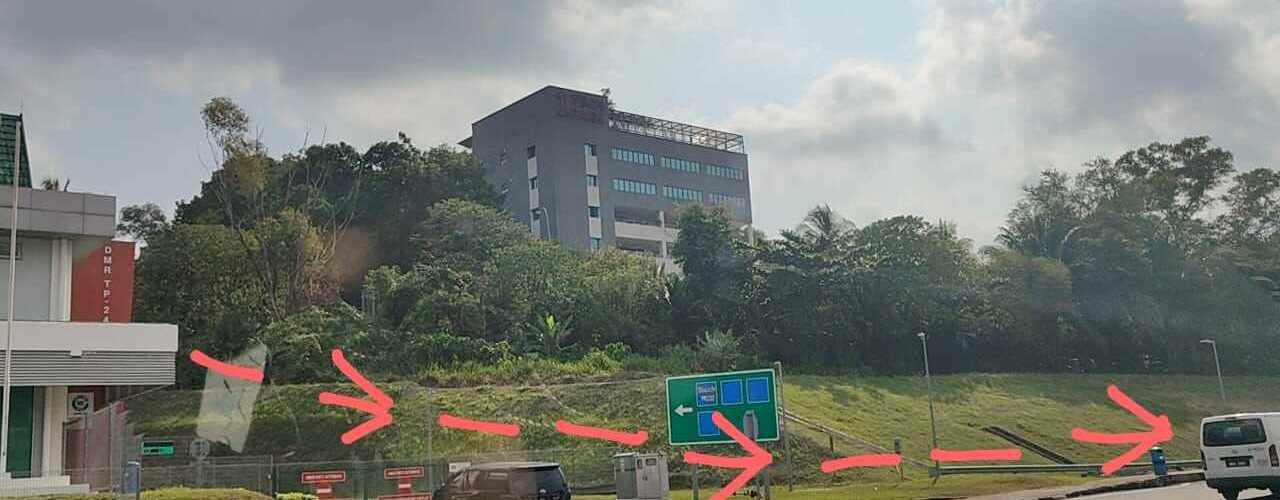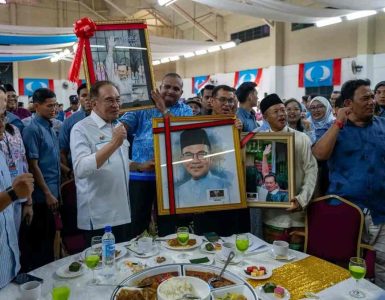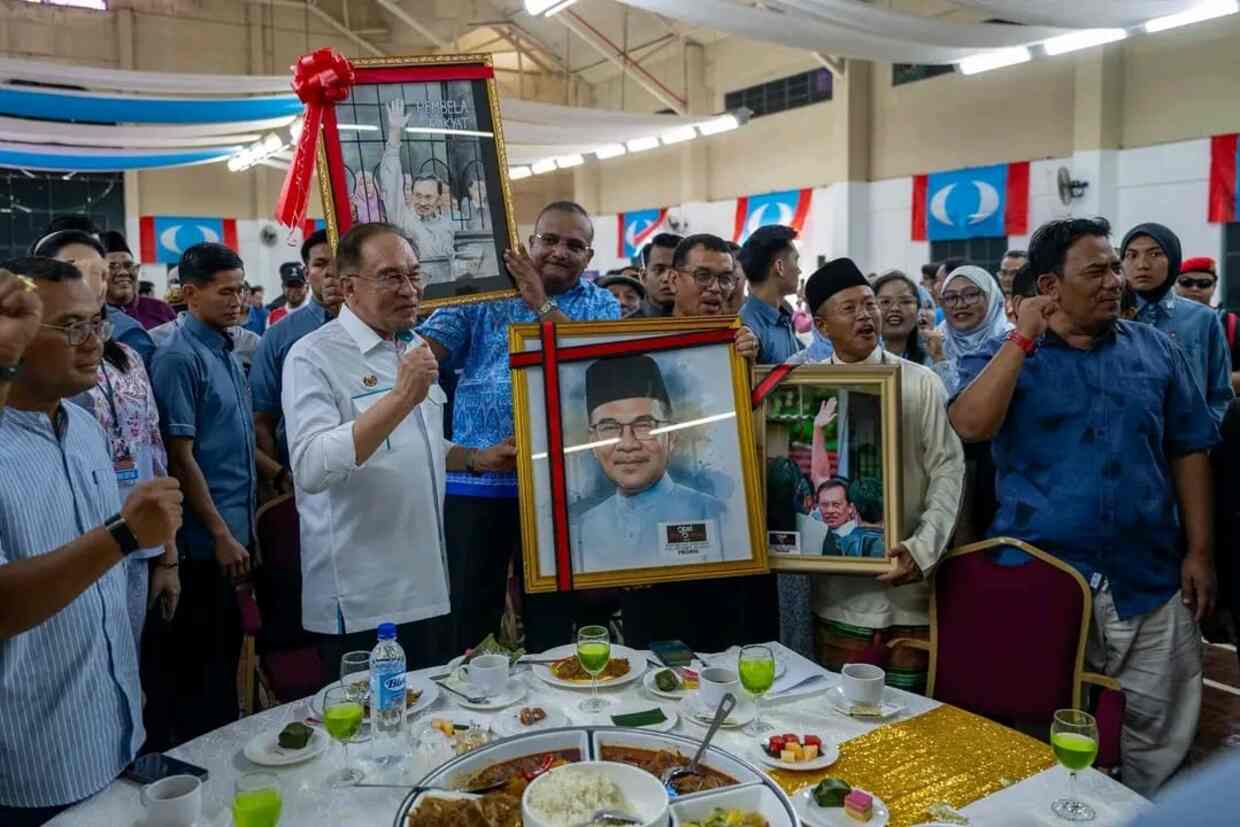The permanent closure of Jalan Tanjung on July 25, 2025, has stirred both relief and frustration among communities in Petaling Jaya, marking the latest chapter in a longstanding dispute between Bandar Utama and Tropicana residents over access rights, congestion, and traffic planning. The 800-metre road—originally built in 1991 as a temporary link—was shut down following a Court of Appeal ruling issued on May 28.
While daily commuters from Tropicana lament the loss of a crucial shortcut to the SPRINT Highway, Bandar Utama residents view the closure as a long-overdue resolution, affirming their years-long campaign to restore the original traffic layout. Since the road’s closure, BU residents have already reported noticeably smoother traffic flow along Lebuh Bandar Utama, underscoring their claim that the temporary route had caused unnecessary congestion and safety risks.

Legal victory for Bandar Utama residents
The origins of the dispute date back to the early 1990s when a temporary access road was built across state land within the LLM highway reserve to facilitate movement between Tropicana and Bandar Utama. This was meant to be a stopgap until Tropicana completed its approved internal road networks. However, over the years, the temporary access became a permanent fixture for motorists from Tropicana, drawing growing resistance from BU residents.
By 2009, mounting concerns over congestion and road safety spurred BU residents to petition the Petaling Jaya City Council (MBPJ) for its closure. Although the road was temporarily shut, Tropicana’s developer managed to obtain a court order to reopen it, prolonging the dispute for more than a decade.
The Court of Appeal’s recent decision to enforce permanent closure is seen by BU residents as a legal endorsement of their position. During a town hall held on July 24, Bandar Utama assemblywoman Jamaliah Jamaluddin reiterated the importance of respecting the court’s decision, a sentiment echoed by MBPJ Mayor Mohamad Zahri Samingon and the Lembaga Lebuhraya Malaysia (LLM).
Tropicana motorists worry about congestion impact
For residents of Tropicana and neighbouring Kota Damansara, the closure spells increased reliance on already congested routes, including Persiaran Surian and the Tropicana tunnel. These roads now bear the full brunt of diverted traffic, especially during peak hours. Many motorists lament the loss of toll-free access to SPRINT Highway via Jalan Tanjung and fear worsening delays in their daily commutes.
In response, MBPJ is conducting a comprehensive traffic impact assessment (TIA) to evaluate current congestion levels and propose both medium- and long-term solutions. Among the possible measures under consideration are improved access to the DASH Highway, better synchronization of traffic signals along Persiaran Surian, and a long-delayed NKVE bypass road that could alleviate pressure on existing routes.
The Works Ministry has indicated that it may appeal the decision, but for now, MBPJ is proceeding with stakeholder consultations aimed at designing a more sustainable traffic ecosystem for both communities.

NKVE bypass plan
Amid rising tensions, calls to revive the NKVE bypass plan have resurfaced as a potential win-win solution. First proposed more than a decade ago, the bypass would directly connect Tropicana to the North Klang Valley Expressway (NKVE), bypassing both Bandar Utama and Persiaran Surian. It was once endorsed by the late Selangor Menteri Besar Tan Sri Khalid Ibrahim, who described it as a balanced solution benefiting both parties.
Supporters argue that the bypass would ease congestion in BU, provide Tropicana with direct highway access, and align local infrastructure with legal and planning requirements. Despite repeated endorsements and recognition of its potential benefits, the bypass has yet to move forward—largely due to bureaucratic delays and funding challenges.
During the recent town hall, BU residents urged patience while the TIA is completed, whereas Tropicana residents pressed for quicker alternatives. However, both sides showed readiness to collaborate with MBPJ to revisit the bypass proposal, reflecting a rare moment of consensus in an otherwise polarised debate.
Towards equitable urban planning
The Jalan Tanjung saga highlights the complex interplay of private development, community advocacy, and public infrastructure. As Petaling Jaya continues to urbanise, the need for integrated, forward-looking traffic planning becomes more critical. This dispute also illustrates how decades-old temporary measures can evolve into contentious flashpoints when proper long-term planning is neglected.
Although the closure may feel disruptive to some, early signs suggest a net benefit to traffic flow within BU. If momentum behind the NKVE bypass plan continues to build, Petaling Jaya may be on the verge of securing a more balanced and legally sound traffic solution—one that respects both the rights of residents and the demands of modern urban mobility.












Add comment